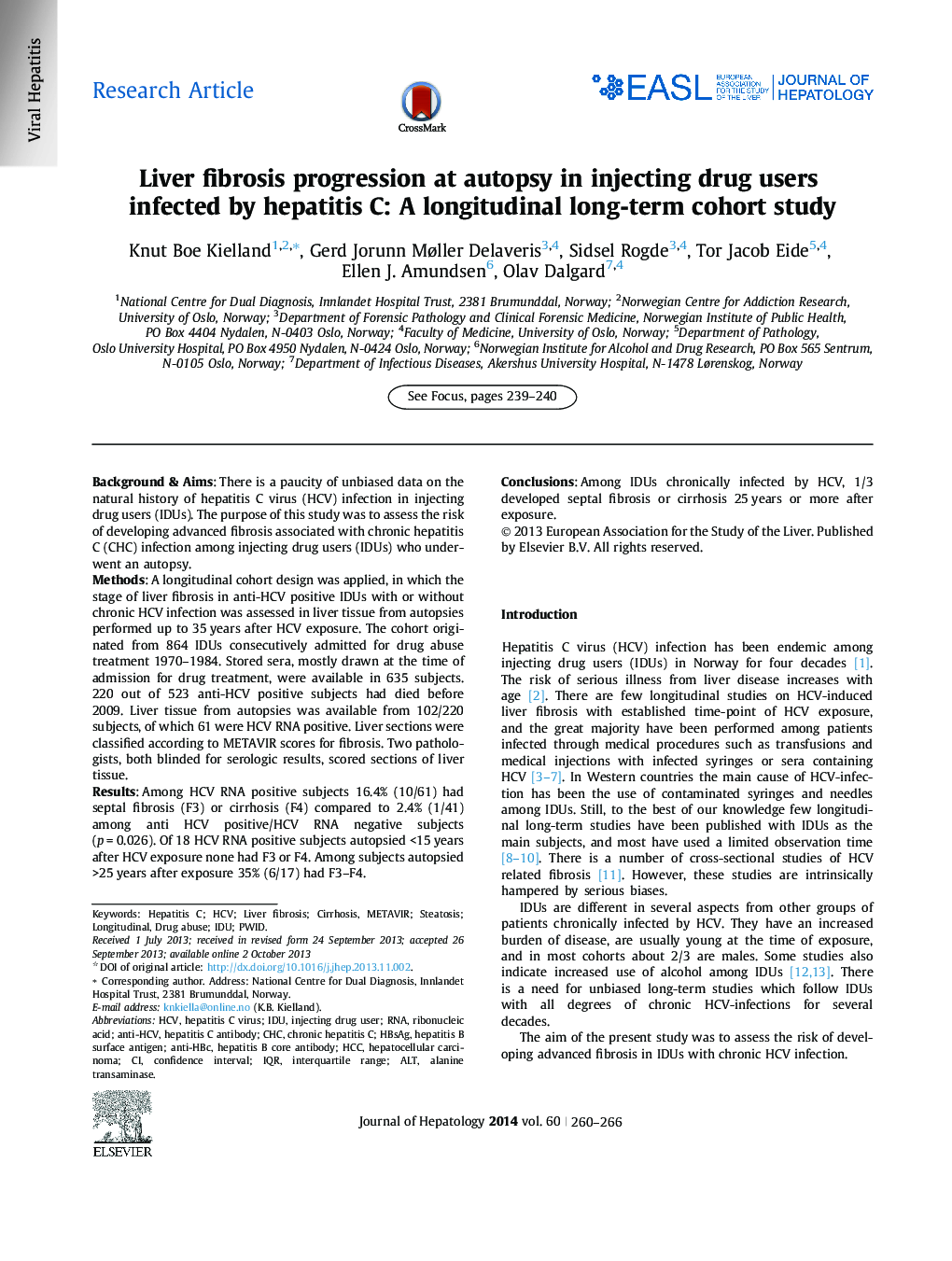| Article ID | Journal | Published Year | Pages | File Type |
|---|---|---|---|---|
| 6104626 | Journal of Hepatology | 2014 | 7 Pages |
Background & AimsThere is a paucity of unbiased data on the natural history of hepatitis C virus (HCV) infection in injecting drug users (IDUs). The purpose of this study was to assess the risk of developing advanced fibrosis associated with chronic hepatitis C (CHC) infection among injecting drug users (IDUs) who underwent an autopsy.MethodsA longitudinal cohort design was applied, in which the stage of liver fibrosis in anti-HCV positive IDUs with or without chronic HCV infection was assessed in liver tissue from autopsies performed up to 35 years after HCV exposure. The cohort originated from 864 IDUs consecutively admitted for drug abuse treatment 1970-1984. Stored sera, mostly drawn at the time of admission for drug treatment, were available in 635 subjects. 220 out of 523 anti-HCV positive subjects had died before 2009. Liver tissue from autopsies was available from 102/220 subjects, of which 61 were HCV RNA positive. Liver sections were classified according to METAVIR scores for fibrosis. Two pathologists, both blinded for serologic results, scored sections of liver tissue.ResultsAmong HCV RNA positive subjects 16.4% (10/61) had septal fibrosis (F3) or cirrhosis (F4) compared to 2.4% (1/41) among anti HCV positive/HCV RNA negative subjects (p = 0.026). Of 18 HCV RNA positive subjects autopsied <15 years after HCV exposure none had F3 or F4. Among subjects autopsied >25 years after exposure 35% (6/17) had F3-F4.ConclusionsAmong IDUs chronically infected by HCV, 1/3 developed septal fibrosis or cirrhosis 25 years or more after exposure.
